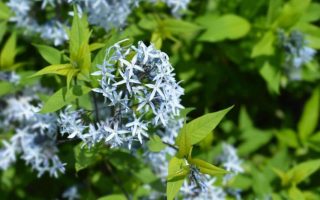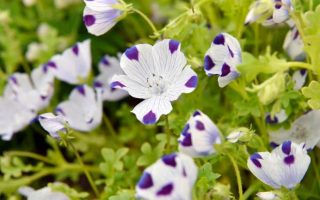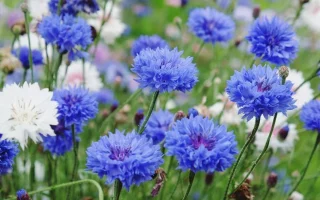lareddepathways.com – The White Turtlehead (Chelone glabra), also known as the “Turtlehead,” is a native perennial plant found in wetland areas of North America. Renowned for its distinctive, turtle-shaped blossoms, this plant has gained popularity in gardens and landscapes due to its elegant white flowers, lush green foliage, and adaptability to moist environments. The White Turtlehead is a beloved species for its late summer to fall bloom time, adding beauty and interest to gardens when many other flowers have finished their display.
Appearance and Characteristics
White Turtlehead is a herbaceous perennial that features sturdy, upright stems and lance-shaped leaves. The plant typically grows between 2 to 3 feet tall and has a bushy, clumping growth habit. Its glossy, dark green leaves are arranged opposite each other along the stem, creating a dense, attractive backdrop for the flowers that bloom later in the growing season.
The flowers of the White Turtlehead are the plant’s most distinctive feature. The blossoms are shaped like the head of a turtle, with the top petal forming the “head” and the lower petals resembling the “neck” and “shoulders” of the turtle. The flowers are pure white with a slight pinkish blush at the tips, and they grow in spikes or racemes at the top of the plant. The individual flowers are about 1 to 1.5 inches long and are produced in clusters, creating a dramatic effect when in full bloom.
The White Turtlehead typically blooms from late summer to early fall, offering a late-season floral display when many other plants have finished blooming. The plant’s flowers are tubular and offer a slight fragrance, though they are not as strongly scented as some other perennials.
Habitat and Distribution
White Turtlehead is native to the wetlands, stream banks, and moist meadows of eastern North America, including the United States and parts of Canada. It thrives in moist, slightly acidic soil, often in locations with full to partial sun. In its natural habitat, it is commonly found growing along stream edges, in swampy areas, and in wet woodlands.
In cultivated gardens, the White Turtlehead is favored for its adaptability to moist soils, making it ideal for planting in rain gardens, boggy areas, or along water features. It can also be used as an ornamental plant in borders, wildflower gardens, or as a part of a native plant garden.
Ecological Importance
The White Turtlehead is an important plant for local ecosystems, particularly in areas where wetlands and water sources play a key role in maintaining biodiversity. The plant is beneficial for erosion control, as its strong roots help stabilize soil, particularly in moist, low-lying areas prone to erosion.
Additionally, the White Turtlehead attracts pollinators such as bees, butterflies, and hummingbirds. The unique shape of the flowers is particularly suited to attracting specific pollinators, such as bumblebees, which are able to access the nectar hidden within the tubular blooms. By supporting pollinators, the plant helps maintain a healthy and vibrant ecosystem, making it a valuable addition to any garden designed to support local wildlife.
Growing and Caring for White Turtlehead
White Turtlehead is a relatively easy-to-grow perennial, especially in moist, well-drained soils. Here are some essential care tips for growing and maintaining this unique plant:
- Light: White Turtlehead prefers full sun to partial shade. While it can tolerate some shade, it will produce the most abundant flowers when grown in a location that receives at least 4-6 hours of sunlight each day.
- Soil: This plant thrives in moist, well-drained soil with a slightly acidic to neutral pH. It is ideal for planting in areas with wet soil, such as along streams, ponds, or in rain gardens. If growing in a garden, ensure the soil remains consistently moist, as the plant does not tolerate drought conditions.
- Watering: As a moisture-loving plant, White Turtlehead requires regular watering, particularly during dry spells. Be sure to water deeply, as the plant’s roots prefer consistently moist soil. In garden settings, mulching around the base of the plant can help retain moisture and prevent the soil from drying out too quickly.
- Temperature and Humidity: White Turtlehead thrives in moderate to cool temperatures and is well-suited to temperate climates. It prefers high humidity and is naturally found in wetland areas, making it ideal for planting in gardens where humidity levels are higher.
- Fertilization: While the White Turtlehead can grow in moderately fertile soil, it will benefit from an annual feeding of a balanced, slow-release fertilizer in early spring. Too much fertilizer can lead to excessive foliage growth at the expense of flowers, so it’s important not to overfeed the plant.
- Pruning and Maintenance: To keep the plant looking tidy and promote new growth, deadheading spent flowers and removing any damaged foliage is recommended. White Turtlehead does not require heavy pruning, but cutting back the plant in late fall after it finishes flowering can help prevent disease and improve airflow around the plant.
Flowering and Fragrance
White Turtlehead is particularly prized for its late-season bloom, which typically begins in late summer and continues into early fall. The plant’s white, turtle-shaped flowers provide a striking visual contrast in gardens as the cooler months approach. While the flowers are not intensely fragrant, they are attractive to pollinators, particularly bumblebees, who are drawn to the unique shape and nectar of the blooms.
The plant’s ability to bloom in the late season makes it a valuable addition to gardens, providing color and interest when many other plants have finished flowering. The showy blooms are produced in dense clusters, adding height and drama to garden beds and borders.
Companion Plants for White Turtlehead
White Turtlehead pairs well with a variety of other moisture-loving plants, making it an excellent choice for rain gardens and wetland-inspired landscapes. Some ideal companion plants for White Turtlehead include:
- Swamp Milkweed (Asclepias incarnata): A beautiful native plant that thrives in similar conditions and attracts butterflies, especially monarchs.
- Joe-Pye Weed (Eutrochium purpureum): Another native perennial that tolerates wet conditions and adds tall, dramatic blooms in late summer.
- Astilbe (Astilbe spp.): A shade-loving perennial with feathery blooms that complement the height and texture of Turtlehead.
- Japanese Iris (Iris ensata): Known for its elegant flowers, this iris thrives in moist soil and adds a striking visual appeal when planted alongside White Turtlehead.
Medicinal and Cultural Significance
While White Turtlehead is not widely used for medicinal purposes today, the plant has historical significance in traditional herbal medicine. Native American tribes once used various parts of the plant to treat ailments such as digestive issues, sore throats, and respiratory problems. However, it should be noted that the plant contains compounds that can be toxic in large doses, so it is not recommended for self-treatment without professional guidance.
In some cultures, the White Turtlehead has been admired for its unique, turtle-like flowers, symbolizing longevity, protection, and resilience. It is often seen as a symbol of nature’s ability to adapt and thrive in challenging environments.
Conclusion
The White Turtlehead is a stunning and versatile perennial that adds both beauty and ecological value to any garden. Its unique turtle-shaped flowers, vibrant green foliage, and ability to thrive in moist, shady environments make it a standout plant for wetland gardens, rain gardens, and areas with poor drainage. With its long blooming period, late-season flowers, and ability to attract pollinators, the White Turtlehead is an excellent addition to any garden designed to support local wildlife. Easy to grow and care for, this native plant will provide years of enjoyment, enhancing your landscape with its elegance and charm.




